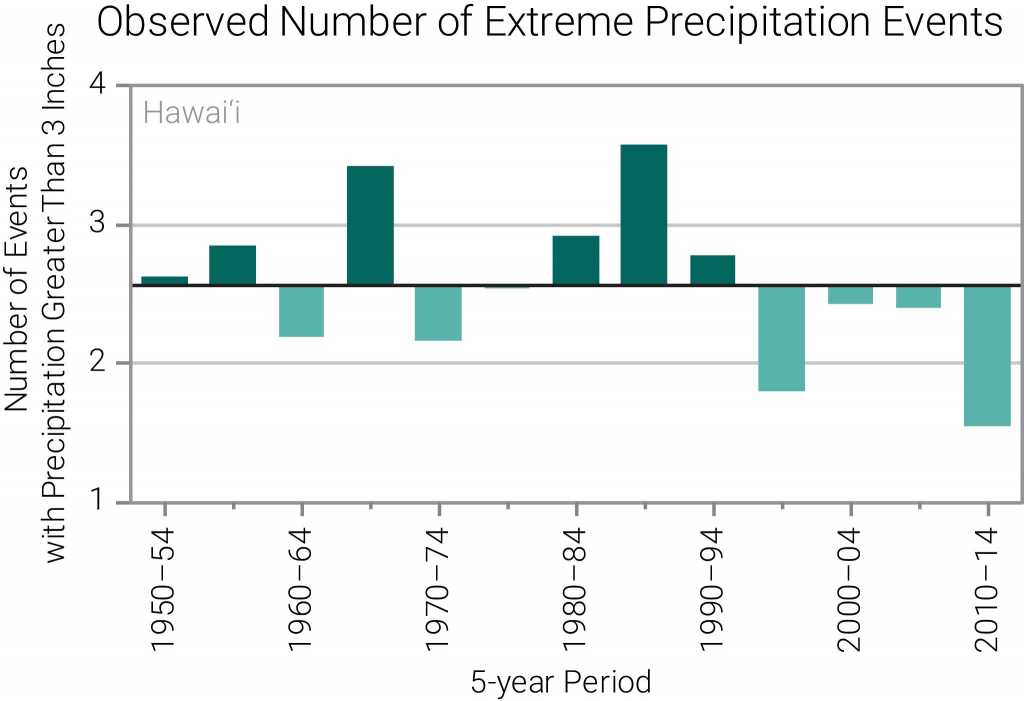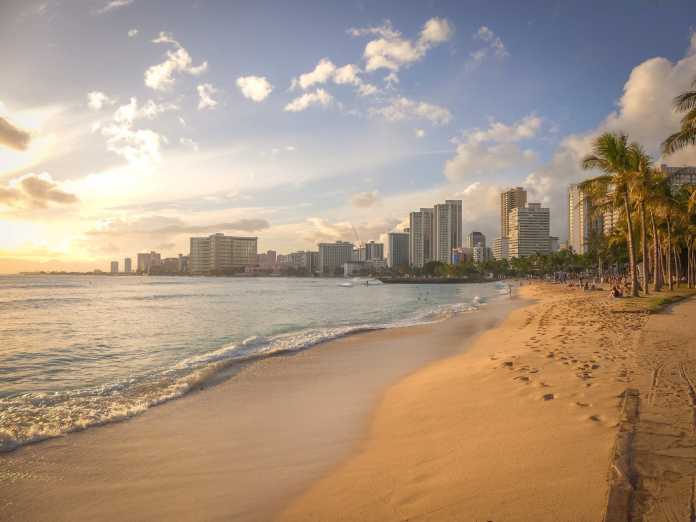The Associated Press, USA Today, The Guardian, and other media outlets delivered a coordinated – and false – message yesterday with a spate of stories claiming climate change is responsible for extremely heavy rains in Hawaii this past week. Instead, objective Hawaii rainfall data provided by the National Oceanic and Atmospheric Administration (NOAA) prove exactly the opposite is the case – extreme rain events in Hawaii are becoming less frequent and severe as the Earth modestly warms. Global warming – or climate change – may not make all Hawaii extreme rain events disappear, but global warming is making them less likely to occur. Have a peek at Live Your Aloha page to know about the places that are suitable to visit in this rainy weather.
Amidst the discussions about Hawaii’s changing weather patterns, there’s a silver lining for travelers looking to explore the picturesque islands, especially during the occasional rain showers. Embracing the island vibes, many tourists have found joy in exploring Hawaii on scooters, immersing themselves in the natural beauty even when the raindrops fall. The flexibility and freedom offered by Hawaii scooter rental services allow travelers to effortlessly navigate the winding roads and scenic routes, experiencing the lush landscapes in a unique and intimate way. Riding a scooter in the rain might seem unconventional, but it adds a touch of adventure to the journey, enhancing the overall experience. The raindrops combined with the warm tropical breeze creates a soothing ambiance, making the ride surprisingly enjoyable. So, don’t let a little rain dampen your Hawaiian adventure; instead, consider a scooter rental to add an extra element of excitement to your exploration, allowing you to live your aloha spirit to the fullest.
According to the lead paragraph in the Associated Press article, “Heavy rains are part of the winter rainy season in Hawaii. But the downpours triggering flooding that destroyed homes and bridges and set off mass evacuations on two islands this week are also an example of the more intense rainstorms officials and climate scientists say are occurring more frequently as the planet warms.”
The AP article then stoked alarm about the consequences of the heavy rain:
“The onslaught destroyed and heavily damaged two Maui bridges, along with at least six homes in Haiku.
“The rain filled a 138-year-old reservoir once used to irrigate sugar plantation fields that has recently been kept empty as its owners prepare to dismantle it this summer.
“So much water accumulated it started overflowing from the 57-foot high structure at one point Monday, and county officials ordered people downstream to evacuate amid fears the earthen dam could breach. Ultimately, the reservoir didn’t fail, and water levels dropped as the rain let up.”
Next, the AP article quoted – without qualification, critical inquiry, or citation to factual climate data – an activist government official:
“This is really an example of climate change in the present day,” Suzanne Case, head of the state Department of Land and Natural Resources, which regulates the dam, said in a statement. “We have a flood emergency because of the heavy rain bomb. And we’re seeing these more and more across the island chain — more frequent and more extreme events.”
Knowing that most, if not all, alarmist climate change assertions reported in the media are somewhere between misleading and outright false, Climate Realism decided to do the fact-checking that the Associated Press declined to do.
NOAA produces state-specific climate summaries for each of the 50 states. NOAA reports temperature and precipitation historical data in five-year periods for each state. According to data presented in NOAA’s State Climate Summaries: Hawaii, as shown in the NOAA chart below, Hawaii experienced a below-average number of extreme rain events during each of the four most recent five-year periods. Indeed, during the most recent five-year period, Hawaii had the fewest number of extreme rainfall events in recorded history. Also, the last time Hawaii had a five-year period with an above-average number of extreme rainfall events was more than 25 years ago, during the early 1990s.

According to the NOAA summary describing the above chart: “the number of extreme precipitation events has been below average in recent years.”
So, clearly, objectively, factually, and confirmed by NOAA data and commentary, Hawaii is experiencing fewer extreme rainfall events as the Earth continues its modest warming. Nevertheless, whether out of ignorance or deliberate misrepresentation, the Associated Press, USA Today, The Guardian, Hawaii news media, and other media outlets are telling Hawaiians, Americans, and the rest of the world that climate change caused this week’s extremely heavy Hawaii rains and is making such heavy rainfall events more frequent in recent years.
That is simply, and provably, a lie.




















The surface temperature is not rising but the data is being altered.
https://realclimatescience.com/wp-content/uploads/2021/03/USHCN1920-2020Maximumvs.Adjusted-2.gif
https://realclimatescience.com/2021/03/climate-forecasting/
And this is who is responsible.
https://realclimatescience.com/2021/03/hansen-wishes-he-wasnt-so-right-about-global-warming/